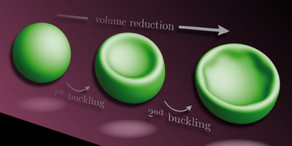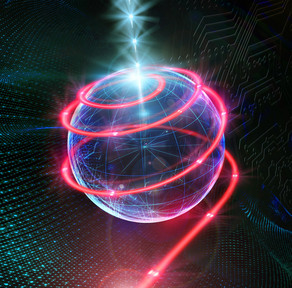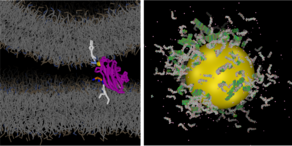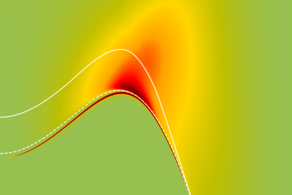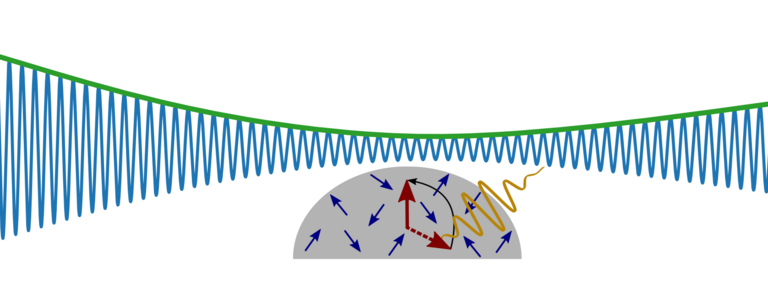Scientific Projects
ICRC TRR 160 projects
Coherent Control of the Electronic and Nuclear Spins in Quantum Dot Ensembles
Project A4 of ICRC TRR 160
with
- Prof. Dr. Frithjof Anders (TU Dortmund)
- Prof. Dr. Mikhail Glazov (Ioffe Institute)
- Dr. Dmitry Smirnov (Ioffe Institute)
The project is focused on the quantitative theoretical description of coherent control and dynamic spin polarization in ensembles of quantum dots induced by ultrafast pumping by optical laser pulses. We describe the radiative decay of the intermediate trion states simultaneously considering the hyperfine coupling to baths of various nuclear spins due to the presence of different isotopes, the dipole-dipole interaction among the nuclear spins, and the nuclear quadrupolar interaction induced by strain fields. Quantum mechanical and semi-classical techniques combined with stochastic approaches will be employed to assess the effect of trains of pulses and to suggest protocols for spin manipulation. Novel foci are interactions between the spins of different quantum dots and spin inertia as measured by the laser pulses with modulated circular polarization. We will study both conventional quantum dots from III-V semiconductors as well as novel types of nanosystems such as organic/inorganic perovskites.
Theory of Spin Noise in Semiconductor Quantum Dots
Project A7 of ICRC TRR 160
with
- Prof. Dr. Frithjof Anders (TU Dortmund)
- Prof. Dr. Mikhail Glazov (Ioffe Institute)
- Dr. Dmitry Smirnov (Ioffe Institute)
The project is focused on the quantitative theoretical description of coherent control and dynamic spin polarization in ensembles of quantum dots induced by ultrafast pumping by optical laser pulses. We describe the radiative decay of the intermediate trion states simultaneously considering the hyperfine coupling to baths of various nuclear spins due to the presence of different isotopes, the dipole-dipole interaction among the nuclear spins, and the nuclear quadrupolar interaction induced by strain fields. Quantum mechanical and semi-classical techniques combined with stochastic approaches will be employed to assess the effect of trains of pulses and to suggest protocols for spin manipulation. Novel foci are interactions between the spins of different quantum dots and spin inertia as measured by the laser pulses with modulated circular polarization. We will study both conventional quantum dots from III-V semiconductors as well as novel types of nanosystems such as organic/inorganic perovskites.
fs-Manipulation of Charge-Magnetism Coupling in an Antiferromagnetic Semiconductor
Project B8 of ICRC TRR 160
with
- Prof. Dr. Mirko Cinchetti (TU Dortmund)
- Dr. Davide Bossini (Universität Konstanz)
- Prof. Dr. Frithjof Anders (TU Dortmund)
The main goal of project B8 is to realize femtosecond spin-to-charge and charge-to-spin conversion in an AF semiconductor.The intrinsic physical complexity of our project demands both a thorough investigation of the ground state of our sample material and a tight collaboration between experiments and theory. Experimentally, we will implement a procedure allowing to disclose the real-time evolution of both the spin and charge systems. Theoretically, state-of-the-art modelling is needed to achieve a comprehensive understanding of the equilibrium and non-equilibrium relevant properties, since they are both generated by many body effects, electronic correlations and spin-charge coupling which are all notoriously arduous to handle.
Nonequilibrium physics in quenched fermionic models in two dimensions
In this project, we study nonequilibrium properties of strongly correlated systems which are subjected to various forms of driving: quenches, trains of pulses or continuous periodic driving. The considered models are correlated fermionic models or quantum spin systems.
see: Deutsche Forschungsgemeinschaft (DFG) - Projektnummer 354412377
Interacting spin waves in quantum antiferromagnets in two dimensions
This project builds on the recent methodological progress for non-perturbative continuous similarity transformations (CSTs) in momentum space, which enables a quantitative understanding of the magnetic excitations and their dynamic correlations of the paradigmatic square-lattice Heisenberg model. The CST maps the strongly correlated quantum many-body problem to an effective model conserving the number of dressed spin waves with strong mutual attractive interactions. We plan to study various unfrustrated two-dimensional Heisenberg models and frustrated ones as well.
see: Deutsche Forschungsgemeinschaft (DFG) - Projektnummer 434439878



